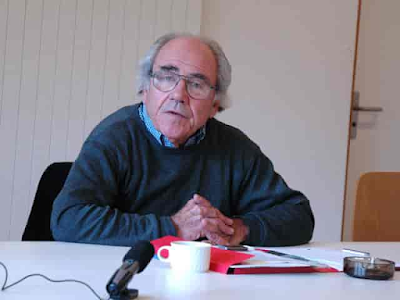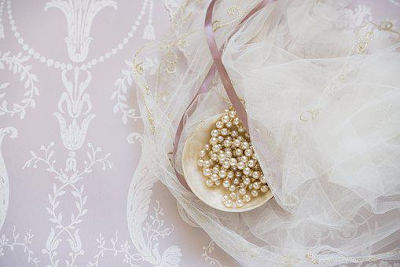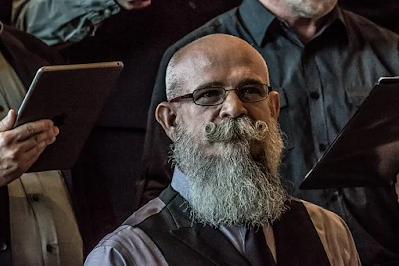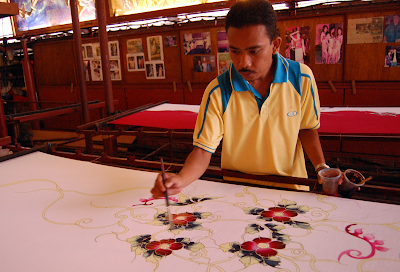Featured
- Get link
- X
- Other Apps
WHAT IS ADIRE?
ADIRE
The Yoruba people of southern Nigeria, West Africa, make and wear adire, a resist-dyed fabric.
Around the turn of the century, the Yoruba term adire, which means "tied and dyed," was originally given to indigo-colored fabric with resist designs.
The term "adire" was extended to encompass a range of hand-dyed textiles employing wax resist batik techniques to create patterned fabric in a dazzling array of dye tints and colors with the advent of a wider color palette of imported synthetic dyes in the second half of the twentieth century.
#How to Make Adire# is a book on the art of making adire.
Two female experts are involved in the traditional manufacturing of indigo-dyed adire: dyers (alaro), who oversee the production and sale of adire, and decorators (aladire), who design the resist patterns.
Two fundamental resist methods are employed in the earliest versions of adire to produce delicate blue or white patterns to contrast with a highly saturated indigo blue backdrop.
To withstand the dye, adire oniko is knotted or wrapped in raffia.
As a resist agent, Adire eleko has starchy maize or cassava paste hand-painted onto the surface of the fabric.
Experimentation led to the development of two more methods.
Adire alabere is a technique for creating fine-lined designs by sewing the fabric with thread before dying it.
Zinc stencils are used to regulate the application of the resist starch in the making of adire batani.
As a design field, the decorator uses a 1 x 2-yard fabric rectangle to create two similar pieces that are then sewn together to form a square cloth that is most often used for a woman's wrapper.
With no one main center of focus, most wrappers feature repeating allover patterns produced with one or more resist methods.
The themes of adire, as well as the labels assigned to them, represent indigenous and current Yoruba concerns, such as the natural world, religion, philosophy, daily life, and significant events.
When not using stencils, decorators have a conceptual template in mind based on prototypes that combine certain patterns to define a wrapper type, such as Ibadandun.
Although some themes are pictographic, they often show little relation to the things that labels represent.
Tie-dyed patterns like "moon and fruits" have just a passing resemblance to what they depict, while adire eleko motifs like ejo (snake) and ewe (leaf) are identifiable.
Adire's Background.
Adire developed as an unique textile style in the nineteenth century in Abeokuta, a hub for cotton cultivation, weaving, and indigo dyeing.
Tie-dyed kijipa, a handwoven fabric colored with indigo for use as wrappers and covering cloths, was the prototype.
Female experts colored yarns and fabric, as well as re-dying old clothes using tie-dyed designs to restore it.
The adire business arose to address the challenge when British trade companies brought cheap imported fabric and swamped the market with bright, affordable printed textiles.
The ladies found that imported white cotton shirting was less expensive than handwoven fabric and that it could be colored and embellished to suit local preferences.
In contrast to the rough surface of kijipa fabric, the soft, silky texture of import cloth offered a fresh drive for decorating.
The soft shirting enabled the decorators to employ tie-dye techniques to make smaller, more accurate designs, and raffia thread to construct delicately patterned stitch-resist adire alabere.
The creation of hand-painted starch-resist adire eleko was prompted by the smooth surface of shirting.
Abeokuta remained the most important adire production and trading hub, but Ibadan, a bigger city to the north, established a core of women artists who specialized in hand-painted adire eleko.
To this day, the Ibadandun wrapper design (“Ibadandun” means “the city of Ibadan is sweet”) is popular.
A large adire commerce network developed throughout West Africa in the early decades of the twentieth century.
Adire wrappers were marketed as far as Ghana, Senegal, and the Democratic Republic of the Congo.
In the 1920s, when adire manufacturing was at its peak, Senegalese merchants traveled to Abeokuta to purchase as many as 2,000 wraps from the female dealers in a single day.
Two technical improvements for decorating adire were created in the 1930s, allowing males to break into the female-controlled business.
Because West Africans believe that men have an affinity for machines and metal that women do not, women retained the dyeing specialty and continued to do tying, hand-painting, and hand-sewing to prepare the cloth for dyeing, but men took up decorating techniques such as sewing machine stitching and applying starch through zinc stencils.
A decrease in the craft happened as a result of a regional and worldwide economic downturn at the end of the 1930s, and no significant manufacturing improvements occurred in the 1940s.
During World War II (1939–1945), European restrictions on the shipment of textile to West Africa had a severe impact.
Following the war, the adire sector was struck a further blow as the markets were inundated with low-priced printed fabric from European, Asian, and African textile factories.
By the 1950s adire manufacturing had drastically decreased, and few young people were being educated in the trade.
In the 1960s, although rural ladies were still wearing the indigo-dyed wraps, metropolitan residents deemed it “a poor people’s cloth”.
However, the 1960s heralded a new phase of innovation in handmade textile manufacturing in Yorubaland.
With the increasing availability of chemical dyes from Europe, there was a revolution in color and methods.
Adire patterns attracted the attention of Nigerian fashion designers who modified the motifs to print highquality fabric using imported color-fast dyes in hues other than indigo.
Sold by the yard the “new adire” was used for clothes, tablecloths, bedspreads, and draperies .
One expatriate lady, Betty Okuboyejo who resided in Abeokuta, is credited for bringing high-quality adire-inspired fabric utilizing a complete spectrum of commercial color-fast dyes to expats and Nigerian elites.
New multicolored adire used a basic technology and became a backyard business so that the marketplaces flooded with the new adire.
This contemporary type of inexpensively made adire, called “kampala” (because it became popular at the time of the Kampala Peace Conference to end the Biafra War in Nigeria) was created by people with no previous experience of dyeing—farmers, clerks, small merchants, and the unemployed.
Hot wax or paraffin was replaced for the indigenous cassava paste as a resist agent, and patterns were produced by basic methods like tie-dye, folding, crumpling, and randomly sprinkling or spraying the hot wax over a fabric prior to dying.
As demand increased and the new adire manufacturers started to professionalize, a block printing method to apply the hot wax emerged and essentially replaced stenciling.
In the twenty-first century, the new multicolored adire continues to meet fashion difficulties and to offer an alternative to machine printing.
In constantly shifting trends, fresh adire appeals to the fashion-conscious Yoruba in the urban and rural regions.
In Nigeria one may still purchase indigo-dyed adire oniko and eleko produced by elderly ladies in Abeokuta and Ibadan and by craftsmen at the Nike Center for the Arts and Culture in Oshogbo where the artist Nike Davies-Okundaye teaches students in traditional adire methods.
However, collectors of indigodyed adire are increasingly turning to textile marketplaces like as Oje Market in Ibadan or merchants that specialize in the ancient fabric.
Those, too, will soon vanish from the Yoruba landscape.
Find Jai on Twitter | LinkedIn | Instagram
- Get link
- X
- Other Apps













